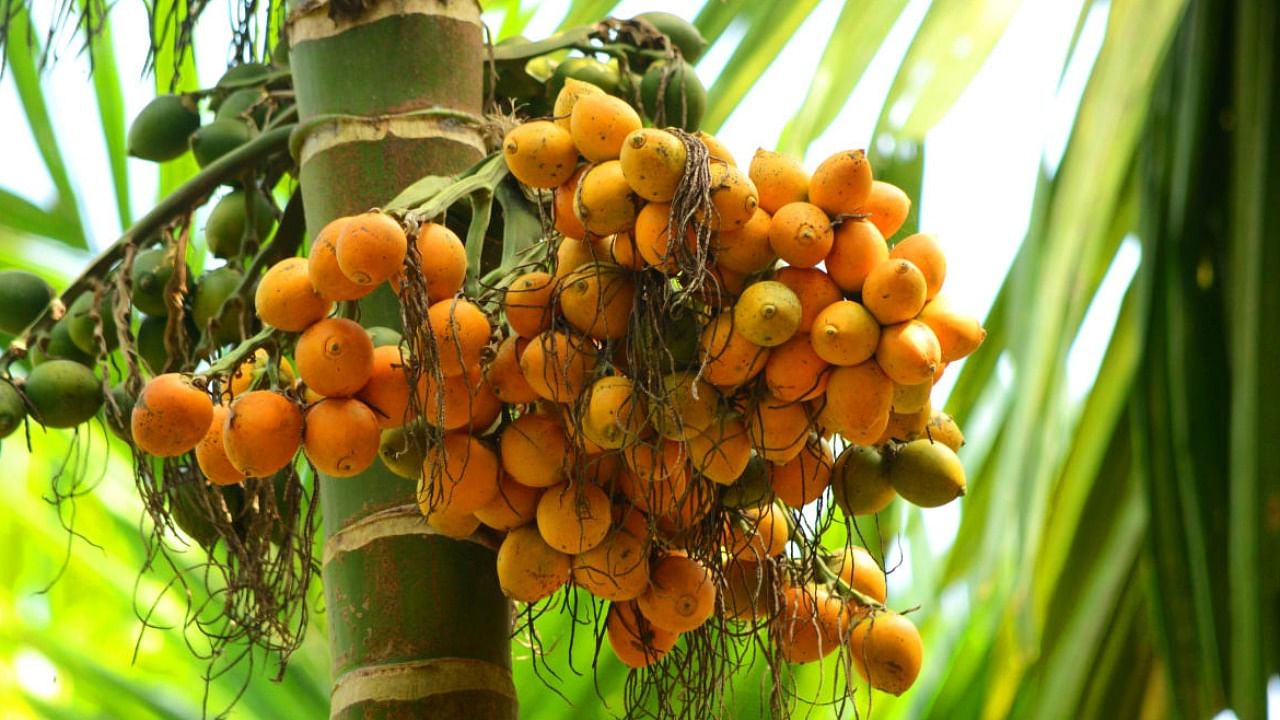
Areca cultivation has seen a rise in areas like Davangere, Chitradurga, Tumakuru and the outskirts of Bengaluru at a time when plantations in Malnad and coastal districts — where the palm is traditionally grown — are hit by leaf spot disease. Farmers in arid and semi-arid zones are opting for this crop for its stable price.
Between 2017 and 2021, the area under arecanut cultivation across Karnataka increased from 2.79 lakh hectares to 5.49 lakh hectares. This pattern is reflected in other states as well, with the area of cultivation in the country increasing from 5.05 lakh ha in 2017-18 to 7.93 lakh ha in 2020-21, according to the Directorate of Arecanut and Spices Development and Arecanut Research and Development Foundation (ARDF).
“The cultivation is on the rise especially in plateau regions and dry land areas,” says A Kishore Kumar Kodgi, president, Central Arecanut and Cocoa Marketing and Processing Co-operative Limited (Campco).
While farmers point to the good market price, the exponential expansion comes amid environmental concerns. Farmers say they are digging borewells 1,200 to 1600-foot deep to get water for irrigation purposes in non-traditional arecanut areas. At present, arecanut growers have a better profit margin when compared to food crops.
Devaraj Reddy, a hydrogeologist from Chitradurga, says, “The availability of irrigation facilities prompted farmers to go for areca. Maintenance is also easy compared to other crops traditionally grown here. Even non-farmers have started purchasing land to take up arecanut cultivation.”
However, droughts have been a dampener. Reddy says several plantations failed in Chitradurga and Kadur following the drought in 2016-17.
“One acre arecanut is supposed to have four acres of kushki (rain-dependent) land. This enables rainwater percolation and increases the water table. Unfortunately, in recent years, kushki land is also being converted into plantations,” he says.
Farmers have started felling tamarind trees to plant arecanut saplings, says H J Padmaraju, a farmer from Tumakuru. “Main food crops, especially ragi, paddy and vegetables, are neglected. But we cannot blame farmers as they have to worry for their livelihoods as well,” he says.
“The expansion might result in a mismatch between supply and demand. We don’t know whether the market will be able to absorb the increase in production,” says N Prakash Kammaradi, former chairman of Agricultural Prices Commission.
This impact, though not immediate, could be a cause of concern in the future, says All-India Areca Growers’ Association general secretary Mahesh Puchchappady.
“If the consumption of arecanut increases and value addition is improved, it would help in maintaining some stability in the market. The government should also support such products by providing support price,” he adds.
To offset any potential effect, Campco is motivating growers to take up cultivation of medicinal plants as intercrops. It will bring in an amendment to its bylaw to accommodate medicinal plants after discussing it with the board, says Kishore Kumar Kodgi.